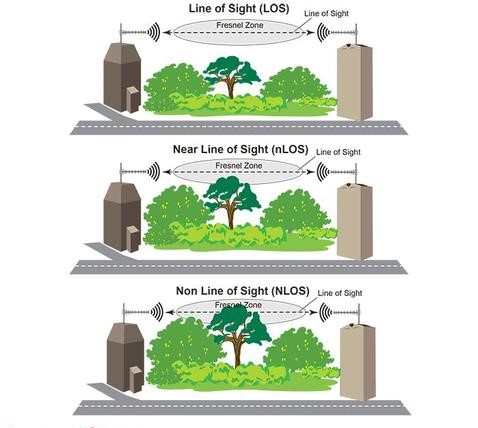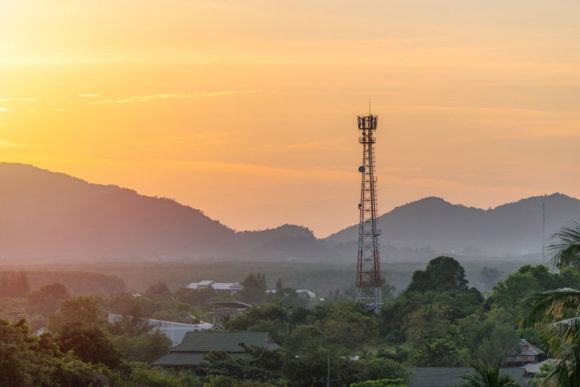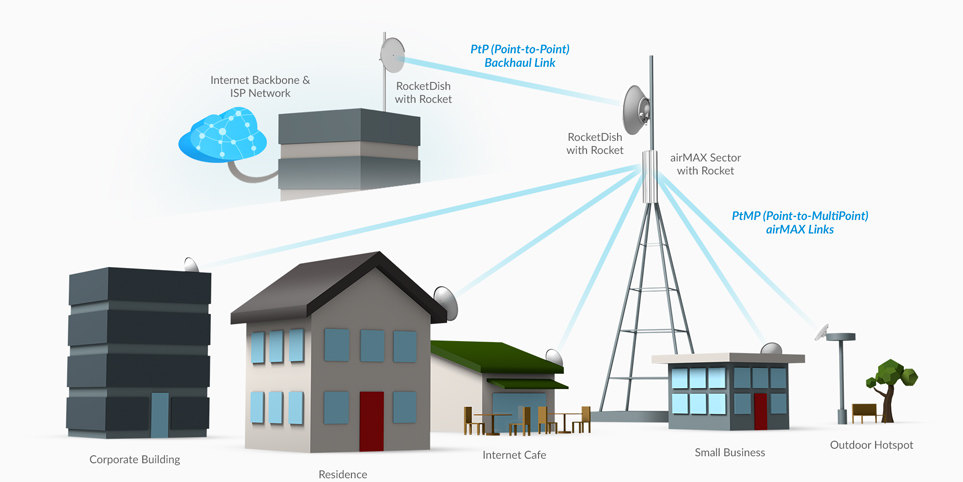Before you start building any Wireless MicroPoP or spend any money make sure you address and document the following points:
- What are the business or personal goals for the network
- Will a wireless network fix the current Internet problems (ie. Speed , Latency or access issues)
- Will the wireless network be a better cost effective solution for clients compared to the current providers
- Who will build and support the network on a ongoing basis
- Pick a location with the right characteristics to allow you to meet your goals.
When you have answered these questions then proceed below.
Usable Access Point Sites
Your wireless MicroPoP network will consist of relay sites where you will install multiple wireless access points that will provide high speed client connections. These access points can be on buildings, radio towers or even homes. To provide a reliable, fast service to each of your customers you will need a line of sight connection from their rooftop to one of your access points. In areas with a lot of trees, hills, or buildings good design is important .

Near Line of Sight access will work in most situations but the wireless signal will be attenuated by the interference so the link between the client and access point will be less.
Location Density
Communities tend to be great places for MicroPOPS. In cities the large buildings cause line of sight problems and many people living in apartment buildings are typically serviced by existing multiple providers.
Ideally you should be able to add at least 30 customers to each connection point. The line of sight distance should be within about 3 kilometres of your access point .
Some types of roof are easier to install on than others.
- In general take a look at the home styles in your area and make sure you’d be comfortable working on the rooftops (or hiring a technician and asking them to work on the rooftop)
- Multiple Dwelling Units – apartment buildings, town houses bring up some unique challenges but can also be very cost effective for client connections.
Topography
Remember that you’ll need line of sight from your access point to each of your customers. If you can install your access point on a structure high up on a hill you might be able to serve a lot of homes.
Hills can also be a problem too many of them and you won’t be able to find a relay site that has line of sight around obstructions to enough homes.
An ideal situation is a area surrounded by foothills where you can install your relay sites and you will be able to see all of the homes in the area.

Back haul Connection
You will need an back haul point to point link connected to a up stream fibre connection to get your customers online.
Typically you’ll purchase this from a Telco provider. Sometimes you can also purchase Dedicated Internet Access from a data centre and also rent space on the data centre roof for your wireless equipment.
Ideally you’ll find a building that already has a fibre connection (an ‘on-net’ building) so you don’t have to pay for any additional trenching, which can be very expensive.
Finding and activating your back haul connection for the MicroPoP can be time consuming, so plan ahead and get started early.

Changing providers
Switching Internet providers can be seen as a hassle. The current ISP service may be just reliable enough to keep people from switching. Many people are reluctant to change
The best approach is to inform your potential customers on what you can offer to solve their Internet problems
Talk to your potential clients and contacts and ask if they’d be willing to switch providers and why (price? reliability? speed?) then create your speed and pricing packages based on the needs of the community.